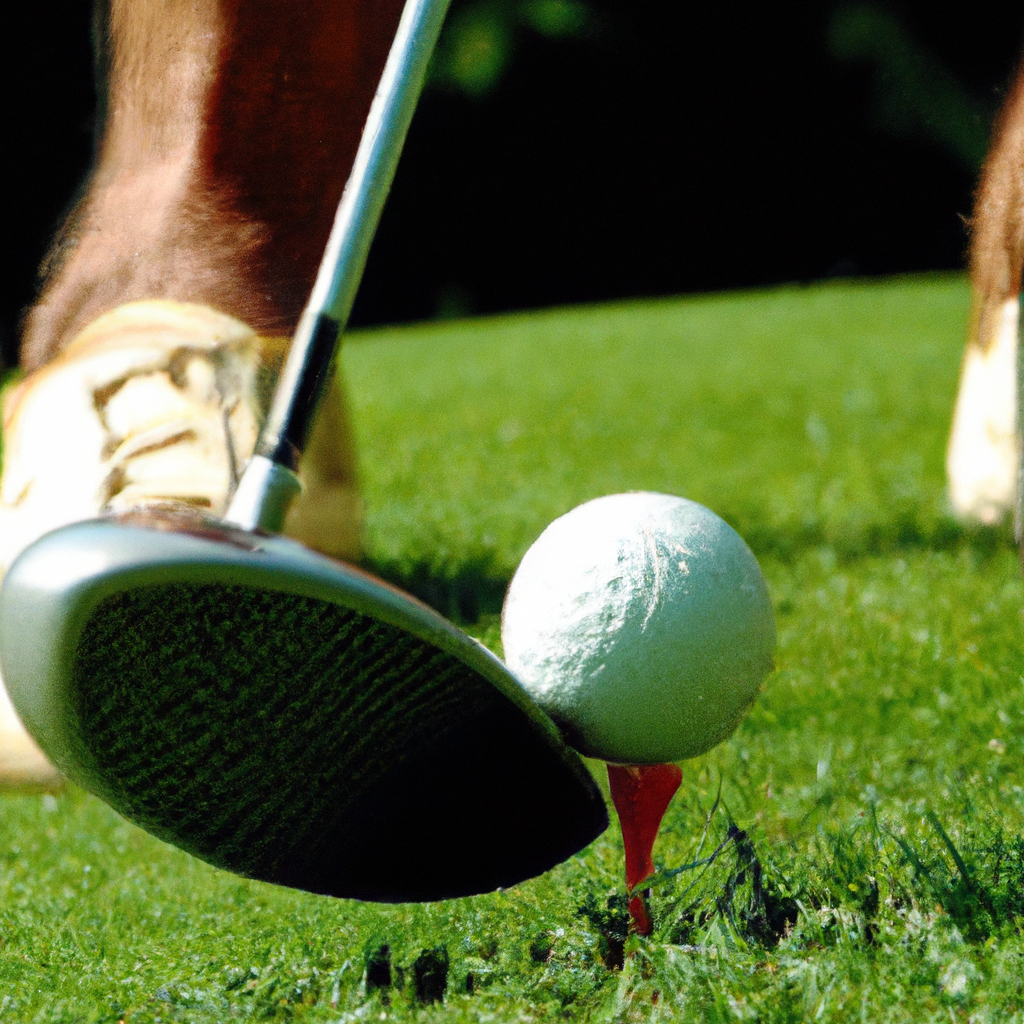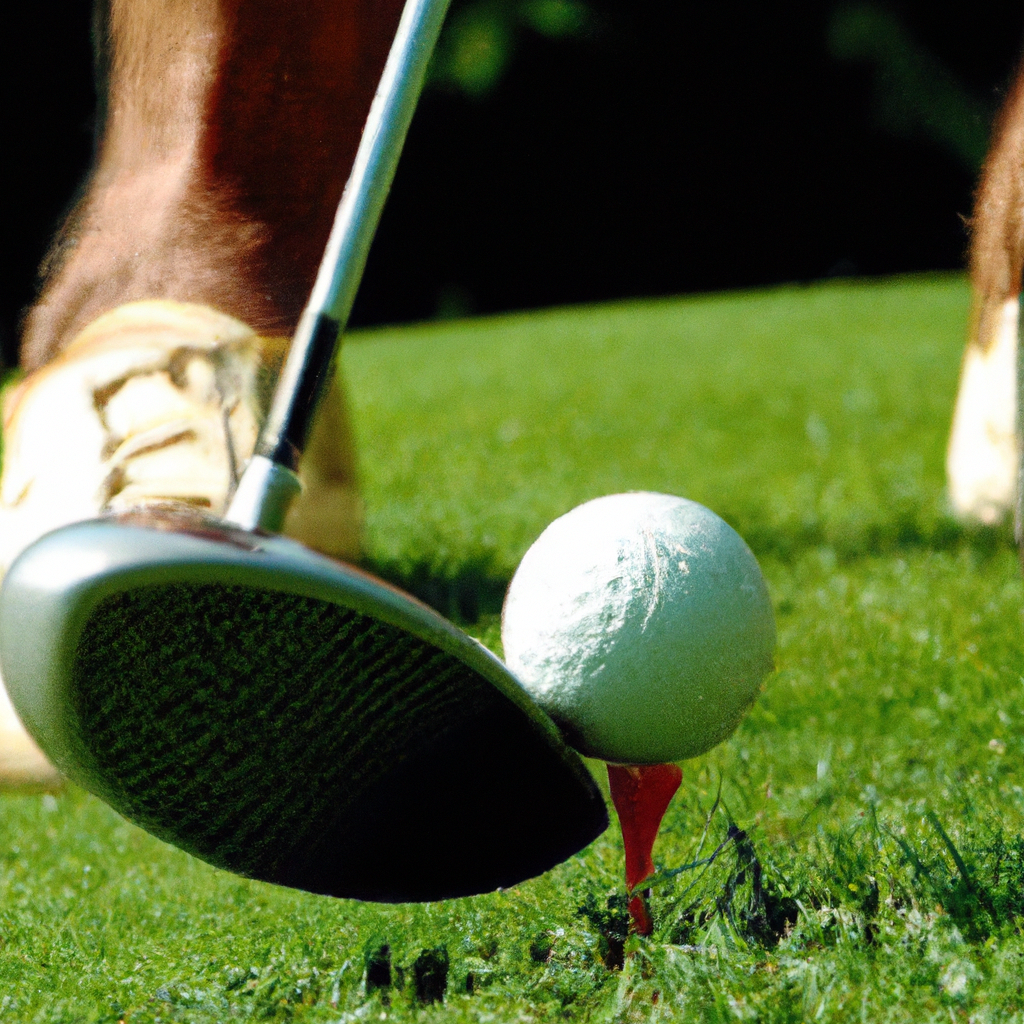We may earn money or products from the companies that may be mentioned in this post.
You’re about to discover the secret behind unlocking a skill that will take your golf game to the next level – mastering the technique to put backspin on a golf ball. Whether you’re a seasoned golfer looking to add finesse to your shots or a beginner eager to impress your friends on the green, this article will guide you through the essential steps to achieve that desired backspin. From proper club selection to precise contact with the ball, get ready to elevate your game and leave your competitors in awe.
Mastering the technique to put backspin on a golf ball
Golf is a game of precision and skill, and one of the most exciting aspects of the sport is the ability to put backspin on a golf ball. Backspin, also referred to as “spin” or “English,” is the rotation of the golf ball in the opposite direction to its initial flight. This technique allows the ball to stop quickly upon landing and even spin backward upon striking the green. Mastering the technique to put backspin on a golf ball can take your game to the next level and impress your fellow golfers. In this comprehensive guide, we will walk you through the key elements required to master the art of backspin in golf.

Understanding the Importance of Backspin in Golf
Backspin is not only visually appealing but also serves a practical purpose in the game of golf. It allows golfers to have better control over the ball’s trajectory and landing position. By generating backspin, players can stop the ball quickly on the greens, thus preventing it from rolling past the desired target. This can be particularly useful when playing on fast and undulating surfaces, where precision is critical. Additionally, backspin can help golfers navigate hazards, such as bunkers and water, by allowing the ball to clear them with minimal distance traveled.
The Science Behind Backspin
To truly master the technique of putting backspin on a golf ball, it is essential to understand the science behind it. Backspin is created through the interaction between the clubface and the golf ball. When the ball is struck with a square clubface and a descending blow, it compresses against the clubface, creating friction. This friction, combined with the spin loft, which is the angle between the clubface and the path of the swing, imparts spin on the ball. The more friction and spin loft generated, the greater the amount of backspin on the ball. Understanding the science behind backspin helps golfers adjust their swing and technique to produce the desired amount of spin.
Equipment and Ball Selection
Choosing the right equipment and golf ball is crucial in optimizing backspin performance. A golf ball with a soft cover, such as a urethane cover, is ideal for generating backspin. The softness of the cover allows the clubface to compress the ball more effectively, creating greater friction and spin. Similarly, selecting the appropriate club can contribute to backspin production. Wedges, especially those with higher lofts, are generally more effective in generating backspin due to their design and grooves. Before hitting the course, ensure that you have the right equipment and consider investing in a golf ball specifically designed for enhanced spin control.
Grip and Stance for Backspin Shots
Proper grip and stance are fundamental components of generating backspin on a golf ball. When it comes to grip, gripping the club lightly and fractionally stronger than usual can aid in creating more clubhead speed and spin. However, be cautious not to grip the club too tightly, as this can restrict your swing and dampen your ability to generate backspin. As for stance, positioning your feet slightly wider than shoulder-width apart and aligning them with the target line can provide a stable base for a controlled swing. Additionally, angling your lead foot slightly open (towards the target) can encourage an upward strike, helping to produce more backspin.
Swing Path and Club Selection
The swing path plays a crucial role in the generation of backspin. To maximize backspin, focus on maintaining an inside-out swing path, particularly for full shots. This means that during the downswing, the clubhead should approach the ball from inside the target line and swing out towards the target after impact. This path optimizes the clubface’s ability to impart a downward strike on the ball, compressing it against the clubface and generating spin. Furthermore, club selection is vital when attempting to produce backspin. Higher lofted clubs, such as wedges, have more surface area on the clubface, allowing for increased friction and consequently more backspin.
Developing a Solid Swing
A solid and repeatable swing is crucial in generating consistent backspin on your shots. To achieve this, it is recommended to work with a qualified golf instructor who can analyze and correct any swing flaws that may hinder your backspin production. Building a solid swing foundation involves mastering the fundamentals, such as grip, stance, and alignment. By diligently practicing these elements and incorporating them into your swing routine, you will develop muscle memory and attain a consistent swing that maximizes backspin potential.
Perfecting the Impact Position
Achieving the ideal impact position is pivotal to generating backspin. It is essential to strike the ball with a descending blow, meaning that the clubhead descends towards the ball at impact. This downward strike compresses the ball against the clubface, creating the necessary friction for backspin production. Additionally, positioning the ball slightly forward in your stance and ensuring that your hands are ahead of the clubhead at impact further promotes a descending strike. With practice, you will be able to consistently achieve the ideal impact position for optimal backspin results.
Generating Backspin with Wedges
Wedges are the go-to clubs for generating backspin due to their high lofts and specialized grooves, designed to maximize spin potential. When using wedges, it is essential to make slight adjustments to your technique to enhance backspin production. One crucial aspect is making a steeper swing plane, which involves taking the clubhead back steeply on the backswing and returning it steeply on the downswing. This steeper angle of attack helps create the necessary spin loft and friction. Additionally, focusing on a smooth and rhythmic tempo throughout your swing will ensure better control and consistency when generating backspin with wedges.
Mastering the Flop Shot
The flop shot, also known as the high-lob shot, is a shot that requires exceptional backspin control. This shot is typically used when faced with an obstacle, such as a bunker or a high lip, and the objective is to elevate the ball high and have it stop quickly upon landing. To execute the flop shot successfully, open the clubface slightly, position the ball forward in your stance, and maintain a soft grip. When swinging, aim to slide the clubhead under the ball with a shallow angle of attack, allowing the lofted face of the club to generate maximum backspin. With practice and mastering the necessary adjustments, you will become proficient in executing the flop shot like a pro.
Fine-Tuning Backspin Control
Once you have developed a solid foundation in generating backspin on a golf ball, it becomes essential to fine-tune your control over spin. This can be achieved through experimentation and practice. Adjusting the amount of clubhead speed, the loft of the club, and the angle of attack can result in variations in backspin performance. By spending time on the practice range and monitoring the results of different swing adjustments, you will gain a better understanding of how to control backspin to fit specific course conditions and shot requirements. Remember, practice makes perfect, and the more you experiment, the better you will become at manipulating your shots with precision backspin control.
In conclusion, putting backspin on a golf ball is an art that requires a combination of technique, understanding of the science behind it, and effective equipment usage. By applying the principles explained in this comprehensive guide and devoting time to practice, you can master the technique of generating backspin and enhance your overall golf game. Whether you are striving to stop the ball quickly on a firm green or navigating tricky hazards, backspin can be your secret weapon. So, grab your clubs, head to the course, and let your friends marvel at your newfound ability to put mesmerizing backspin on a golf ball.
